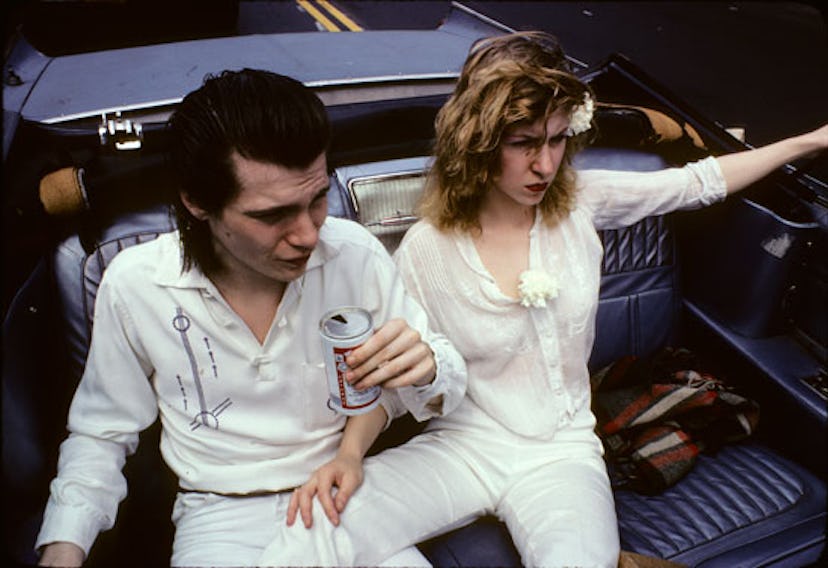5 Questions With Photographer David Armstrong

For nine months in 1979, photographer David Armstrong took a break from shooting the romantic, naturally lit portraits he’s now known for, and started candidly snapping his friends and lovers within the context of their downtown and decidedly carefree lives. People like Jean Michel Basquiat, Philip-Lorca diCorcia, Patti Astor, John Lurie, and then-illustrator Steven Meisel, hanging out on Cape Cod, at the Mudd Club, and in Armstrong’s old apartment. Over three decades later, a selection of these images have come to the surface in Night and Day, a new book from Morel Press that also includes a conversation between Armstrong and his fellow Boston School photographer Jack Pierson and a cover designed by poet and painter Rene Ricard. Some of the photographs are currently on exhibit at Half Gallery in Manhattan.
So this was your crew at the time: Patti Astor, John Lurie, Steven Meisel..? Totally. It’s the most inner circle. All the stuff that looks like a film set that was when they were filming Underground USA. The core of it is the people who were living at my apartment on Elizabeth Street. At any given time there were six or seven people there and we had a lot of parties. And then if it was hot out, we’d just jump in the car and go to the Cape. I called it Night and Day because of the situation… At that time, the city was nearly bankrupt and maybe that’s why, but it felt so open and free.
I’m struck by how cool and timeless everyone looks. That was the style back then—New Wave. Everyone wore suits from the early Sixties and overcoats. The girl in the red dress (below), I picked that outfit for her at Manic Panic, and I swear she wore it for three months straight. The picture of her in the bathtub, that was at DavidByrne’s house. But you know, after a certain point, everything looks great. If in 1979, I saw pictures from 1944 of what was going on in Greenwich Village, I would have been intrigued by them.
Were these pictures taken for fun, or were they intended at the time as art? It was a funny situation. I had come to New York to finish my last year of art school at Cooper Union. And I had to compete for a 5th year program at the Boston Museum School, and I was in a strange place, because everything I had done up to then was about natural light, with a medium format camera—very formal portraiture. And the fact of the matter was: I wasn’t up much during the day! For me it was a whole new world, and it was particularly crazy time in the city. So Nan Goldin, who’s been my good friend since we were fourteen said, ‘Just take a 35 and carry it around with you.’ So I thought, Ok let me just go with this and see what happened. That worked from between April of 1979 to around New Year’s. It was just snapshots, with a little bit of technique that I had picked up from Nan. I had never shot color before.
So why did you stop taking them? Well it really became a huge crisis. I really had to pull it together and do a set of portraits that everyone at the school knew me for. That’s when I did the Elizabeth Street portraits. Again, very formal, inspired by paintings. And I won the competition! I won $10,000 which was more money than anyone had ever won before. At the time, it was a fortune.
What made you decide to publish them now? I would look at the work every few years, and then Aron Morel wanted to do a book and I showed him a bunch of possibilities and he really liked these. So we exhumed these slides from 35 years ago that were still in the little boxes shipped from Kodak and dated on the outside. There were probably several thousand slides. We got it down to like 120. It was really difficult. It’s hard to cut your own work. But I love the book. I love the conciseness of it. And I love how personal it is. No one’s ever seen these images before.
Night & Day is available at morelbooks.com. The show will be on view at Half Gallery through July 23.
Photos: courtesy of Half Gallery